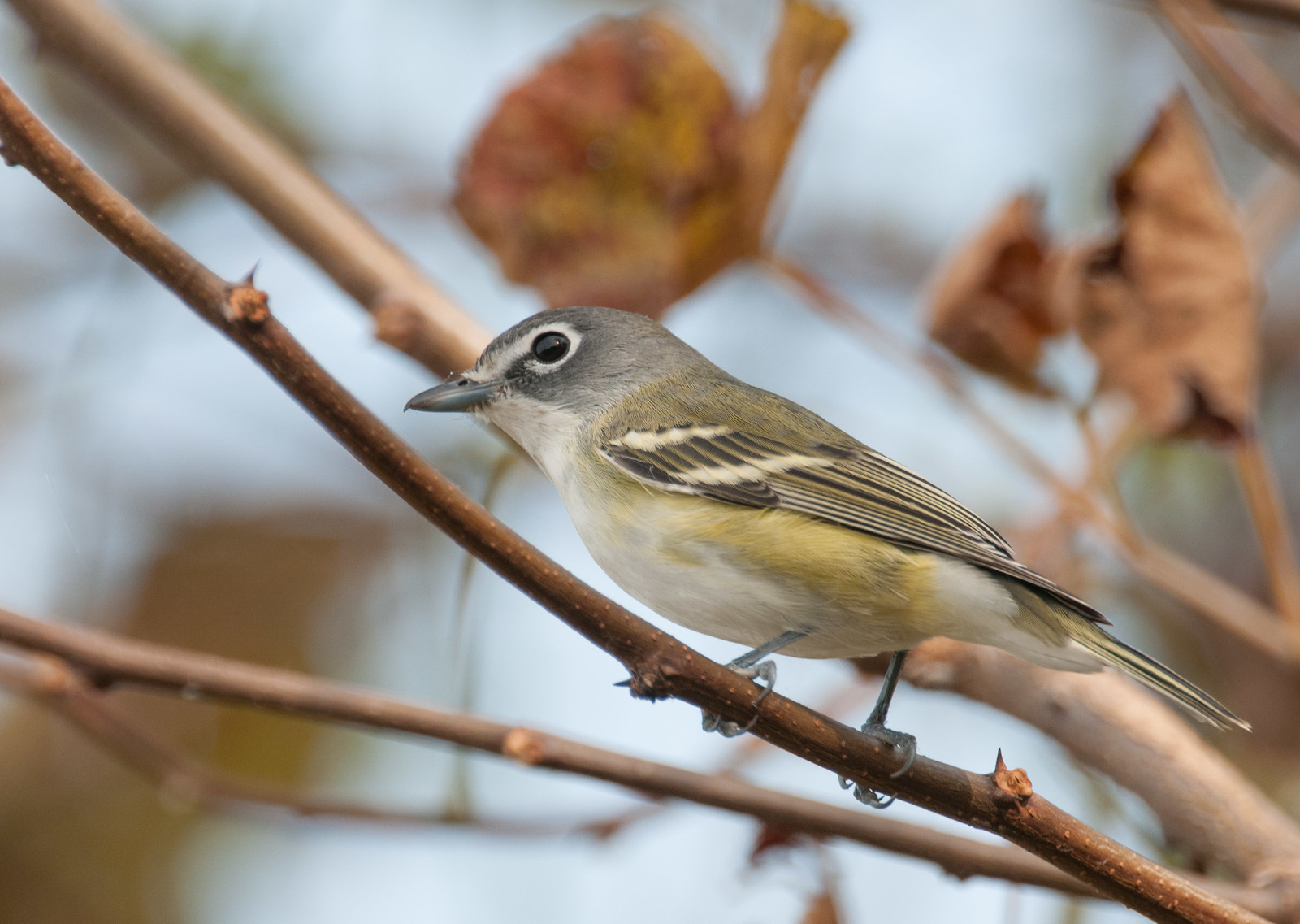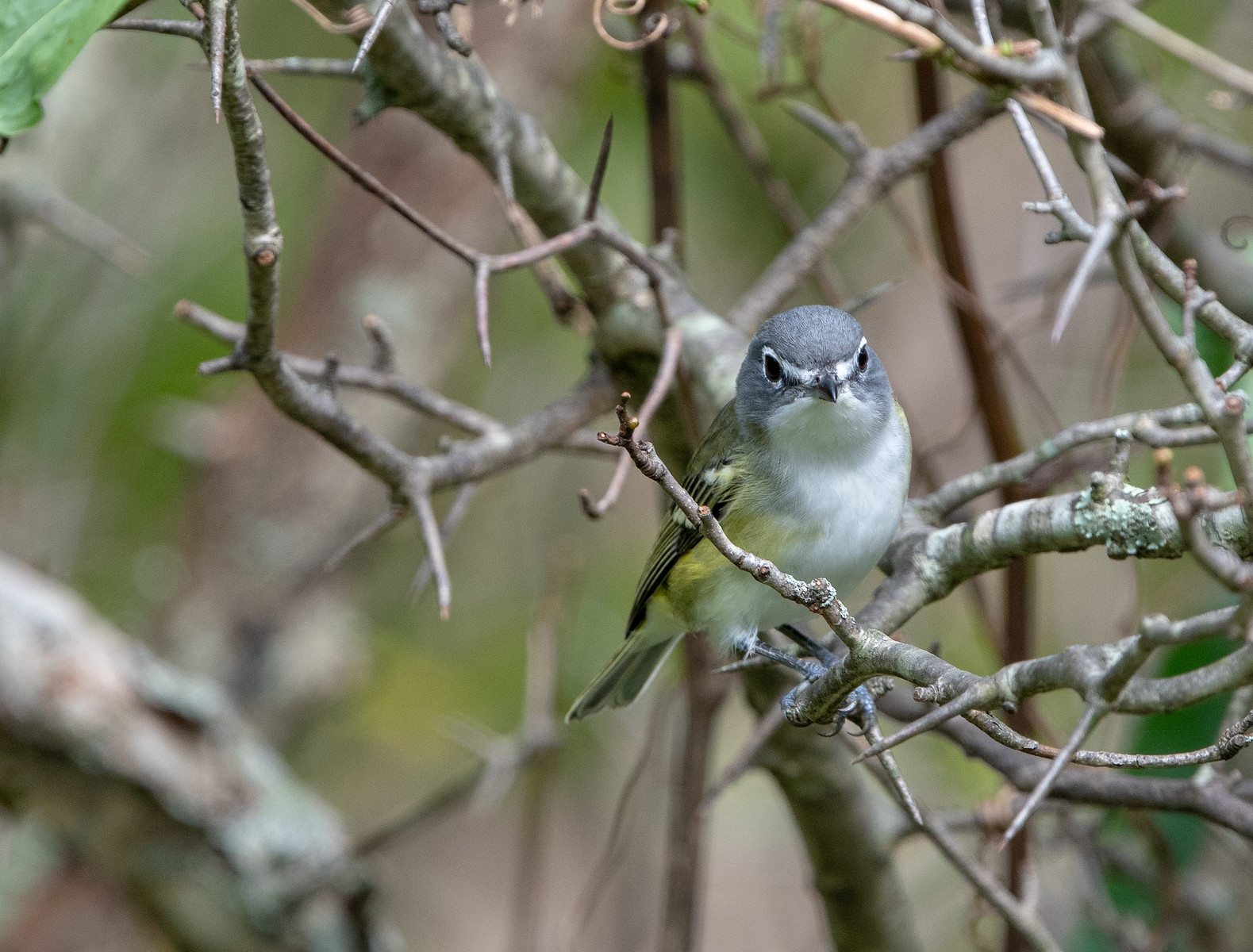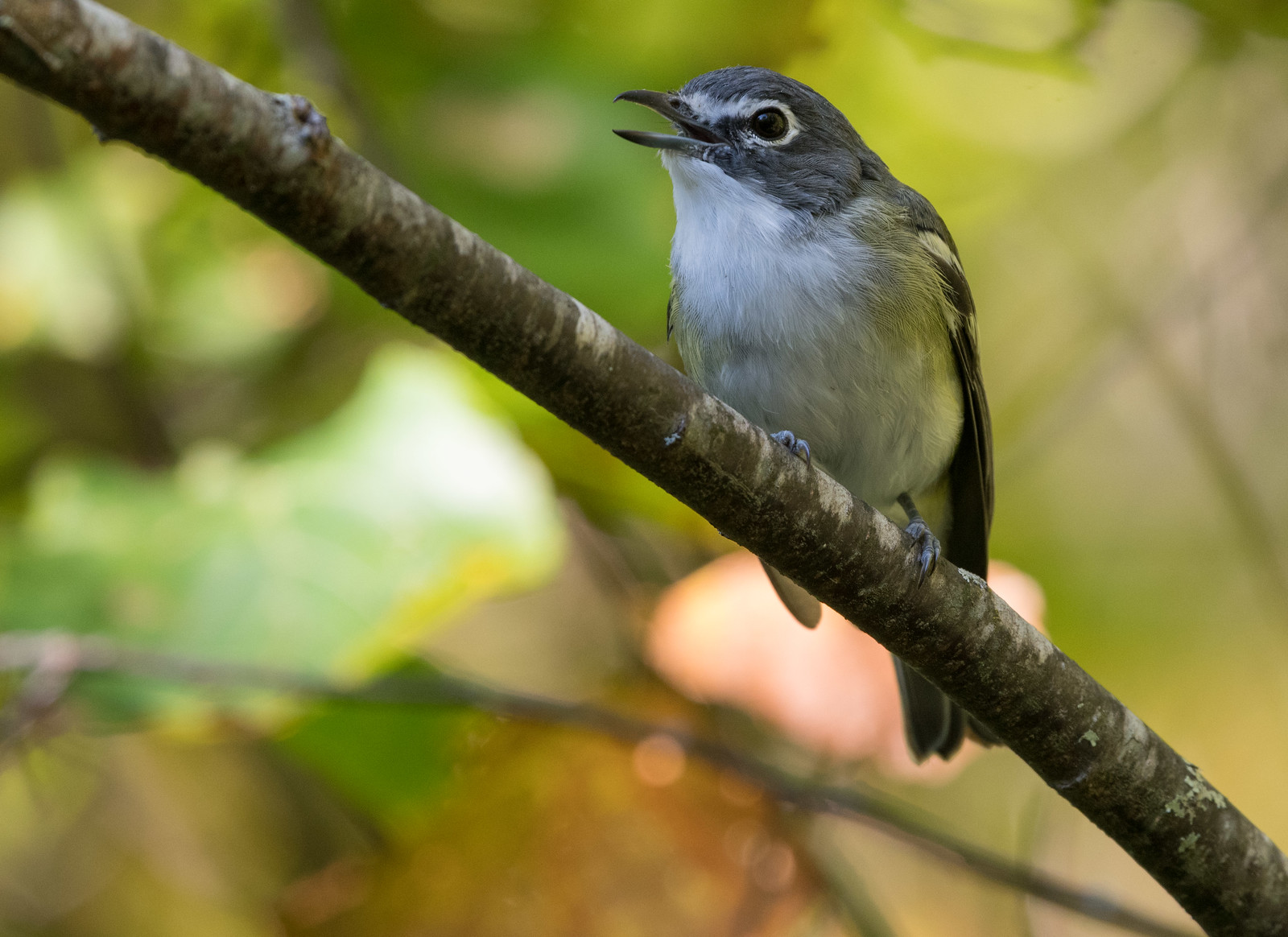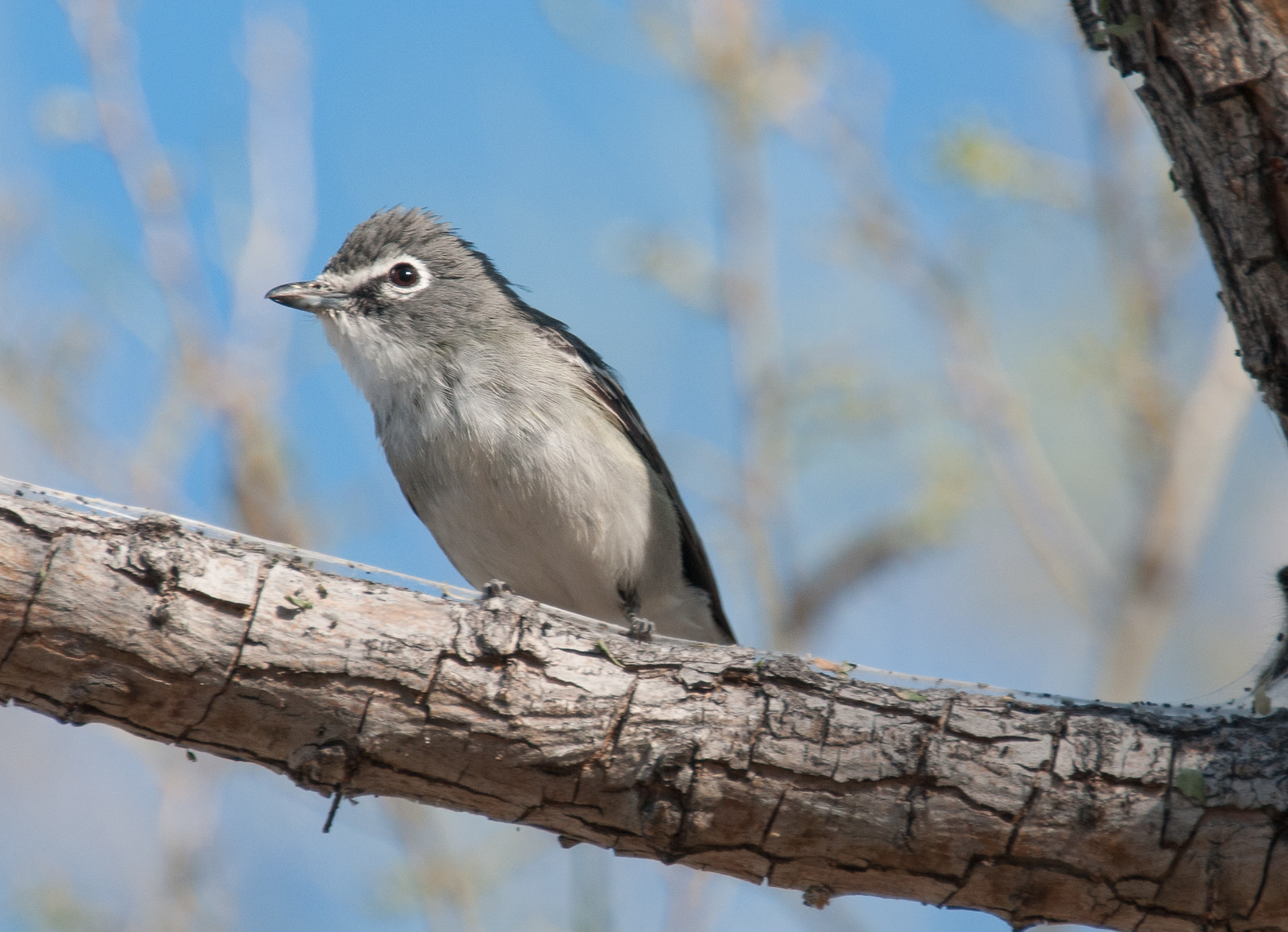| Early Spring Date: | April 4 |
| Late Spring Date: | May 23 |
| Best Dates to See in Spring: | April 17 - May 3 |
Spring: Blue-headed Vireos are the first vireos to visit Monticello Park each spring. They start to arrive in early April and are most commonly seen during the second half of the month. They are never in the park in significant numbers. They nest in Canada, the northern United States, and the Appalachian Mountains.
Fall: Blue-headed Vireos are early migrants during the spring and late migrants during the fall. They start to arrive in the park in late September and are most commonly seen during the second and third weeks in October.
Where to See Them in the Park
Blue-headed Vireos usually forage in the mid-level of trees. They rarely go into the stream.
Physical Description

Adult male Blue-headed Vireos have a blue-gray head, whitish underparts, and a yellow wash on the flanks. The back is olive, and the wings have two white wingbars. The most prominent fieldmark is their white spectacles, which they appear to be wearing backwards, with the arms pointing in front of the eyes. The head of juveniles and adult females is a little lighter, but this is difficult to see in the field.

The white spectacles look even more prominent when viewed head on.
Fall: Fall plumage is similar to spring plumage, but it is paler.
Vocalizations

The two-part call and response song of the Blue Headed Vireo is slower, more slurred, and not as sweet as the song of Red-eyed Vireos. David Sibley says it sounds like see you, cheerio, be-seein-u, so-long, seeya.....
Hear the vocalizations of the Blue-headed Vireo.Notes

The Blue-headed Vireo used to be called the Solitary Vireo before the Solitary was split into three species. The other two species are the Cassin's Vireo, found along the west coast of North America, and the Plumbeous Vireo, found in western states east of California, as well as in western Mexico. Plumbeous means lead-colored, and the Plumbeous Vireo looks like a Blue-headed without yellow in any of its feathers.
Origin of Names
Common Names: Blue-headed for the blue-gray head. Vireo is Latin for green.
Genus Name: Vireo means green.
Species Name: Solitarius means solitary, because Alexander Wilson, who first collected the species, generally saw it alone.
Blue-headed Vireo video footage
Return to the Index
